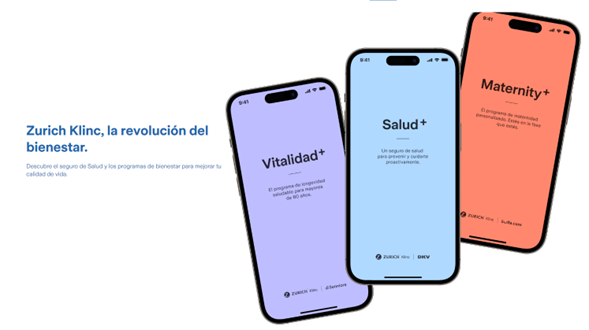
Modernizing Insurance: Success Strategies for the New Generation
After years of trying to crack how to make insurance appealing to younger customers, a cluster of companies might be pointing to the right formula to succeed in this segment. There is a convergence of business models to address this generation. The promising formula to attract them is simpler than once thought; profiling the young generation reveals their basic needs and demand allowing companies to grow strong from there.
One effective strategy has been starting with rental and belongings insurance, as demonstrated by companies like Lemonade. Offering affordable and transparent rental insurance, Lemonade quickly gained popularity and set a new standard in the industry. Tuio, which launched in 2020 solely as a rental insurance provider, followed this path and achieved significant success. Building on this foundation, Tuio expanded its offerings in 2024 to include life insurance, showcasing the potential for growth and diversification. Similarly, Toggle, an effort from Farmers Insurance Group, began with flexible and customizable renters insurance and has since expanded its portfolio to include auto and pet insurance. Looking to the future, these companies are developing bundled products that combine various types of insurance, such as home, auto, and health. These bundles not only offer higher premiums but also increase customer lifetime value (CLTV) by providing greater convenience and comprehensive coverage tailored to the evolving needs of customers.

Another pivotal strategy for appealing to younger customers is adopting a mobile-centric approach. This involves creating intuitive, user-friendly mobile applications that allow customers to manage their insurance policies seamlessly from their smartphones. Hedvig, a Swedish insurtech, exemplifies this approach with a fully digital platform where customers can purchase insurance, file claims, and receive customer support all through a sleek mobile app. The app allows users to report claims by simply recording a voice memo, which is then swiftly processed by their service team. Hedvig also offers features such as the ability to manage personal information, adjust coverage, and even switch from other insurers effortlessly using mobile BankID, making the process smooth and paperless.

Similarly, GetSafe, a German insurtech, initially focused on rental insurance and has expanded its offerings to include various types of coverage, such as liability and legal insurance. GetSafe provides a seamless digital experience through its app, featuring AI-driven assistance and personalized notifications. This mobile-first approach ensures that these companies meet the expectations of modern consumers, making insurance more accessible and integrated into their daily lives.
In an effort to modernize and make insurance more accessible, Zurich launched Klinc, a 100% digital insurance brand, in 2018. Initially focused on providing on-demand insurance for electronic devices such as mobile phones, tablets, and laptops, Klinc has since expanded its offerings to include a broader range of insurance products, including home and life insurance. The Klinc platform allows users to manage their policies, file claims, and adjust coverage directly through a mobile app, ensuring a seamless and user-friendly experience. This initiative by Zurich exemplifies how traditional insurers are leveraging digital solutions to reach a new generation of tech-savvy customers who demand convenience and flexibility in managing their insurance needs.

Another notable example is Allianz Partners, which has introduced an integrated Digital Health Assistant as part of its Digital Access to Care initiative. This platform provides customers with immediate access to digital health services, including a symptom checker, doctor chat, and a 24/7 medical hotline. Accessible via mobile devices and platforms like WhatsApp or Telegram, it aims to deliver convenience and rapid access to medical advice, addressing the increasing demand for telehealth services.
Besides these strategies regarding offering expansion or enhanced customer experience to appeal to younger audiences, the leadership of these companies is key to go one step beyond and create a sense of community between the stakeholders. The community approach illustrated by Daniel Schreiber, the CEO and co-founder of Lemonade, is a prime example of engagement with stakeholders. Schreiber is dedicated to building a community that includes consumers, the company, and retail shareholders. He is known for his approachability and engagement with both investors and the broader public. From his New York office, Schreiber actively communicates with investors and the broader community, including participating in YouTube interviews and engaging with social media influencers. This hands-on approach not only builds trust but also helps foster a transparent and inclusive corporate culture. Schreiber’s efforts aim to revolutionize the traditional image of an insurance CEO, focusing on transparency and community involvement as key pillars of Lemonade's strategy.
The insurance industry's transformation to appeal to younger customers hinges on several key strategies. Companies like Lemonade and Tuio have successfully started with rental and belongings insurance, expanding into bundled products to enhance customer lifetime value. Adopting a mobile-centric approach, as seen with Hedvig and GetSafe, has made managing insurance policies more accessible and user-friendly. Zurich's Klinc and Allianz Partners' Digital Health Assistant demonstrate the effectiveness of leveraging digital solutions for broader accessibility and convenience. Leadership is crucial, exemplified by Daniel Schreiber of Lemonade, who fosters a community-centric, transparent approach. These strategies collectively redefine the insurance industry, aligning it with the evolving needs and values of younger generations, setting a path for continued growth and success.
Insurtech Global Outlook - NTT DATA
Header photo by Hannah Busing on Unsplash
Subscribe to Our Newsletter
Get the latest insights about Global solutions for leading insurers on your email





